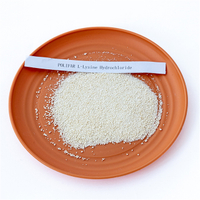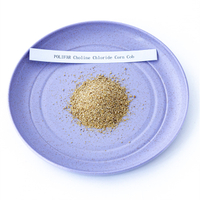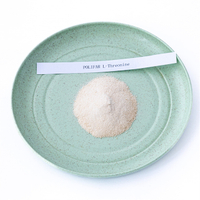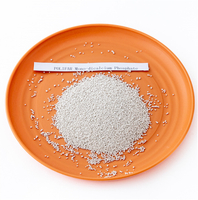Views: 2 Author: Site Editor Publish Time: 2019-11-11 Origin: Site








Trace element feeds are widely used in animal farming today, and trace element feeds are at the forefront of research. In these years, traditional inorganic salts were used to extract trace elements, but with the deepening of research and the extension of the timeline. Traditional inorganic salts have been found to have more and more safety hazards in the process of production and use, mainly reflected in the quality problems and environmental pollution problems of livestock products. These phenomena have caused widespread concern and anxiety. This article will analyze the safety hazards caused by trace element feed.
This article contains the following:
Safety hazards of common trace elements
The main harmful substances in trace elements
Control measures
Zinc-containing trace element feed can promote animal growth, affect bone development, enhance animal immune function, improve fur appearance, affect animal taste and appetite, and is called "life element". At present, zinc source-based trace element feeds commonly used in the market mainly include zinc sulfate, zinc oxide, basic zinc chloride, etc., and they mainly have the following safety problems.
In nature, zinc, lead, cadmium, and copper are symbiotic ores, and cadmium and zinc are also members of the same family. Cadmium is often found in zinc sources. Zinc sulphate is mostly made of zinc oxide as a raw material, and copper cadmium slag is also used. If the impurity is incomplete or the quality of the industrial sulfuric acid used is uneven, the cadmium and lead content in the product will be greatly exceeded, and the cadmium content has the largest variation range. Excess cadmium contaminates the trace element feed product with zinc source, and cadmium poisoning occurs after the animal trace element feeds, which reduces the trace element feed intake and reduces the production performance.
In recent years, the test results of the National Feed Quality Supervision and Inspection Center (Wuhan) also showed that the cadmium content in the zinc sulfate sample exceeded 10.3%, and the cadmium content in the zinc oxide sample exceeded 15.1%, and the highest content was 2.92%. The lead content exceeds the standard of 1.7%, and the total arsenic content exceeds the standard of 0.9%. If such a zinc source is used, not only the cadmium content in the trace element feed will exceed the standard, the product quality does not meet the trace element feed hygiene standard; and the animal will cause it after eating. Decreased feed intake and reduced production performance will mainly damage the renal tubules, cause osteoporosis and severe anemia, damage the reproductive system, and interfere with the absorption and metabolism of zinc, copper and iron in the body.
Copper is one of the important trace elements required by animal organisms. It plays an important role in the body's hematopoiesis, growth and reproduction, and enhances the body's resistance. At present, the copper source used by feed enterprises is mainly copper sulfate.
Copper sulphate is an extremely acidic water-soluble compound that is highly apt to absorb moisture and cause agglomeration. It is difficult to add and use, and causes severe corrosion damage to processing equipment.
After the moisture absorption of copper sulfate, the trace element feedis easy to agglomerate, followed by decomposition of copper cations and sulfate ions after the moisture absorption, thereby providing a "hot spot" for electricity transfer, accelerating the oxidation and destruction of nutrients in the trace element feed, such as vitamins. The destruction and rancidity of the oil also reduce the biological potency of copper; in ruminants, copper molybdate complexes are easily formed in the rumen, affecting the absorption and utilization of copper.
High-dose copper sulfate can be used to promote growth and bacteriostasis. Except for the absorption part of the animal, most of the copper is excreted, which has a great destructive effect on the environment, polluting the soil and water source, and another part of the copper is deposited in the liver of the animal. It is easy to cause copper deposition and poisoning after human consumption.
Recently, reports of scutellaria meat have occurred. The main reason is the use of high copper and improper selection of copper sources. A large amount of VE is destroyed by highly oxidized copper sulphate, and free copper ions generated in feed tend to make oil special. It is an oxidation of unsaturated fatty acids, which is spoiled and rancid. ,
Iron is one of the essential trace elements in animals. It is a component of most metabolic enzymes in animal organisms. It is also an important component of proteins such as hemoglobin, myoglobin and lactoferrin. In addition, iron participates in the energy metabolism process of animal cells as a component of cytochromes.
The iron source in the trace element feed is mainly ferrous sulfate, amino acid iron, and ferrous fumarate. Due to the instability of ferrous ions, in the trace element feed, ferrous iron is easily oxidized to ferric iron and loses its nutritional function. The absorption rate of ferrous sulfate is only 3%-10%. In order to achieve the desired feeding effect, an excessive amount of ferrous sulfate is usually added. However, excessive ferrous sulfate affects the digestion and absorption of other trace elements and oxidizes and destroys vitamins; Oxalic acid, phytic acid and phosphate combine with inorganic iron to form insoluble iron salts, which hinder the absorption and utilization of iron and cause iron deficiency anemia in animals.
The manganese source for trace element feed is mainly manganese sulfate.
Manganese is a less toxic trace element and is essential for the growth and synthesis of bone tissue in animals. Manganese is involved in bone formation, body metabolism, and the synthesis of sex hormones and certain enzymes, directly affecting the reproductive performance of animals. In addition, manganese also acts on the central nervous system and the immune system. Manganese also has the function of promoting growth and improving immunity in animals, and is an important component of various enzymes. Participation in a variety of metabolism, such as body fat, protein, can promote animal growth, enhance animal reproductive performance, and have fewer side effects on animals. However, the high cadmium content in manganese sulfate should be paid attention to by manufacturers and enterprises.
Since the current standard does not have a limit of cadmium, the production enterprises have not controlled this, and the quality supervision department has not been able to rely on it for supervision. The EU Directive limits the amount of manganese sulfate monohydrate to ≤ 30 mg/kg. In recent years, nearly 20% of the samples of manganese sulfate samples detected by the National Feed Quality Supervision and Inspection Center exceeded this limit, reaching a maximum of 70 mg/kg.
2. The main harmful substances in trace elements
It is generally believed that the toxic and harmful substances in trace elements mainly include lead, arsenic, cadmium, mercury, fluorine, chromium, aluminum, antimony, dioxins, etc., which are included in the current trace element feed hygiene standards: lead, arsenic, cadmium, mercury, fluorine, chromium. Among them, lead, arsenic, cadmium and dioxins have received much attention.
3. Control measures
1) Trace element production enterprises should strengthen the quality control of their products, strengthen process improvement, and improve the technical content of products, thereby reducing the residues of toxic and harmful substances in products.
2) Feed enterprises should strengthen their understanding of trace elements, strengthen their awareness of prevention and control, formulate strict raw material procurement standards and effective testing methods, in addition to the elemental content, strictly control the toxic and harmful elements to prevent Inferior quality trace element products enter the feed enterprise.
3) For the incoming raw materials, the actual inspection shall be carried out according to the verification cycle plan, and at the same time, each batch of incoming raw materials requires the supplier to provide the factory inspection report. In order to ensure product quality, the factory inspection of mineral elements should include the detection of toxic and harmful elements.
4) In order to ensure that the end product meets the requirements of sanitary standards, it shall conduct self-inspection or entrusted inspection of its toxic and hazardous components on a regular basis.
5) In response to a series of problems in the production and use of traditional trace element additive products, the industry has continuously researched and introduced a number of new trace element products, including basic salts and organic trace elements, which should be actively guided. The feed enterprises use them correctly to improve the technical level of the industry, thus promoting the technological upgrading of the industry and making the products safer, more stable and more efficient.
Trace element feeds are closely related to our animal farming, and trace element feed is for this reason that we have to pay more attention to its various effects. In particular, negative impacts can stop losses in time and facilitate faster development.
content is empty!






